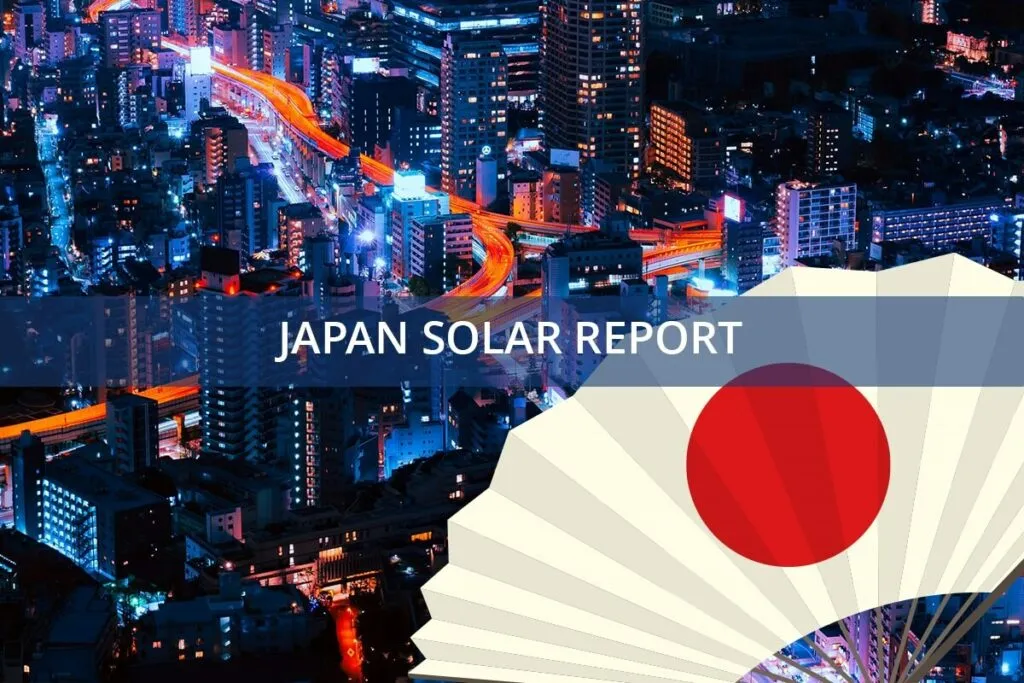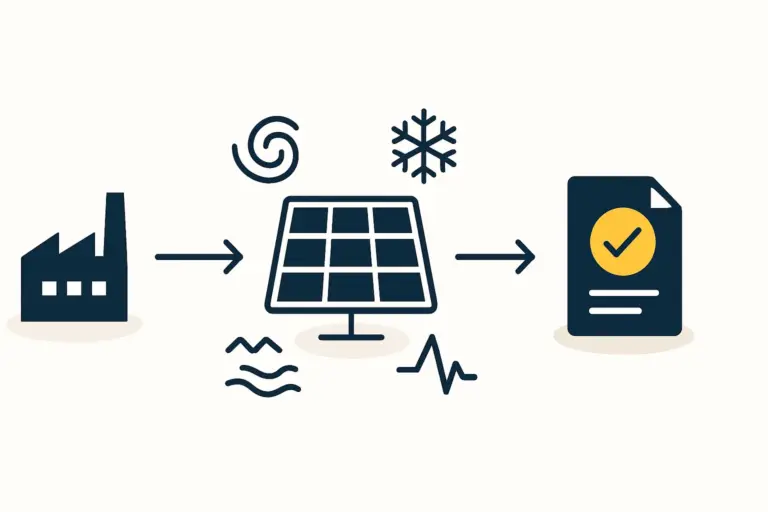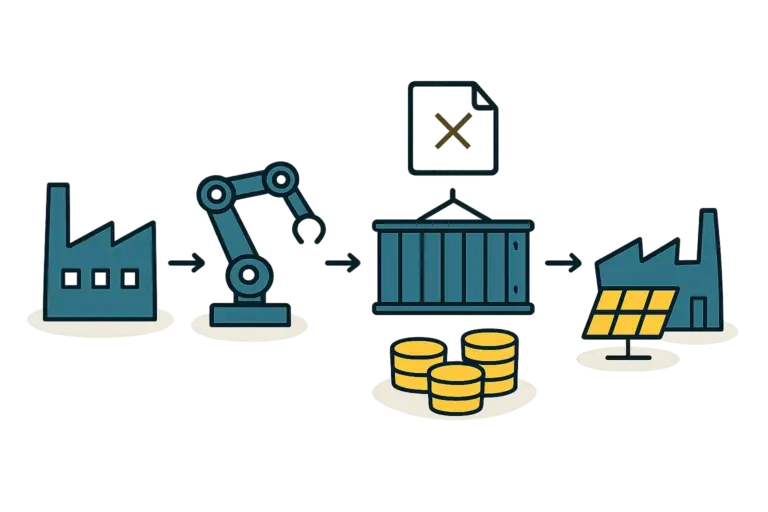For businesses entering the solar manufacturing industry, a European-standard turnkey production line is one of the most common starting points. These systems are designed for efficiency and a balance between performance and cost. But what happens when your target market isn’t just competitive, but demands a level of quality and automation that goes far beyond the standard?
This was the exact scenario faced by a Japanese trading house. As a newcomer to solar manufacturing, its reputation depended on meeting Japan’s legendary “zero-defect” quality expectations. This required a fundamental rethinking of the standard production line, transforming it from a cost-effective system into a high-precision manufacturing instrument. This article explores how such an adaptation is achieved, using insights from real-world projects.
The Standard European Turnkey Model: A Baseline for Global Production
A typical turnkey solar production line offers a robust and efficient manufacturing solution. It often employs a semi-automated approach, where machines handle critical processes while manual labor handles material transport and quality checks. This model is highly effective in many regions, striking an optimal balance between initial investment, operational flexibility, and production output. It is the foundation upon which many successful solar module factories are built.
This balanced approach allows new manufacturers to become operational quickly and manage their initial capital outlay. For markets with extremely high labor costs and an unwavering cultural focus on perfection, however, this standard model serves merely as a starting point.
Why Japan Demands a Different Approach
The Japanese market operates under a manufacturing philosophy known as monozukuri—literally, “the art, science, and craft of making things.” This concept embodies a commitment to continuous improvement and the pursuit of perfection. In practical terms for solar module manufacturing, this translates to:
-
Zero-Defect Tolerance: Even the smallest cosmetic blemish or microscopic cell crack can lead to rejection.
-
High Labor Costs: Automation isn’t just a tool for precision; it’s an economic necessity to remain competitive.
-
Demand for Full Traceability: Buyers expect to know the complete history of every component within a module to guarantee long-term performance and bankability.
These stringent requirements mean that a standard semi-automated line, while effective elsewhere, would struggle to deliver the quality and consistency demanded by Japanese end-users. The solution lies in elevating automation and precision at key stages of production.
Key Modifications for a High-Automation Production Line
Adapting a production line for a high-specification market involves targeted upgrades to machinery, process control, and data management. The goal is to eliminate variables, particularly those introduced by human intervention, to ensure every module is manufactured to the same exacting standard.
Upgrading the Stringer for Flawless Cell Handling
The stringer machine solders solar cells together to form strings. In a semi-automatic setup, an operator often loads the cells. A fully automatic stringer, by contrast, uses robotics for this task. This upgrade is critical because automated handling significantly reduces the risk of inducing micro-cracks—tiny, often invisible fractures in the solar cells that can degrade performance over time. For a zero-defect policy, minimizing these cracks is non-negotiable.

Enhancing the Lamination Process for Durability
The laminator encapsulates the cell strings between layers of glass and protective backing, creating a durable, weatherproof module. To meet Japanese standards, the laminator is enhanced with advanced temperature and pressure sensors that provide real-time feedback, ensuring perfectly uniform heat and pressure distribution. This precision prevents issues like delamination or bubbles, safeguarding the module’s 25-year performance life.
Implementing Advanced Testing and Quality Control
All production lines include quality checks, but a high-specification line demands more powerful tools.
-
Electroluminescence (EL) Tester: Upgraded with higher-resolution cameras to detect minuscule defects like micro-cracks or finger interruptions that standard testers might miss.
-
IV Tester (Sun Simulator): Employs a more precise light source and measurement system to verify the module’s power output with a high degree of accuracy.
This advanced testing suite provides the objective data needed to certify that each module meets strict quality criteria.
Automating Material Flow and Data Tracking
In a semi-automated line, workers manually move materials between stations. A high-automation setup replaces this with Automated Guided Vehicles (AGVs) or integrated conveyor systems, reducing the risk of damage during transit and improving workflow efficiency.
Crucially, a sophisticated Manufacturing Execution System (MES) orchestrates this entire process. The MES tracks every component—from the specific batch of silicon wafers to the roll of EVA encapsulant—and links it to a unique serial number for each finished module. This provides the complete traceability required by discerning buyers and financiers.

The Business Case: Investment vs. Long-Term Value
These upgrades represent a significant financial decision. A fully automated, high-precision line can increase the initial investment by 20–30% compared to a standard semi-automated setup. This additional expenditure is a strategic choice that yields substantial long-term returns:
-
Reduced Operational Costs: Lower reliance on manual labor and minimal human error lead to more predictable operational expenses.
-
Higher Yield and Lower Defect Rates: Automation ensures consistent quality, drastically reducing waste and rework.
-
Increased Bankability: Modules produced with full traceability and certified low defect rates are considered more reliable by investors and large-scale project developers, often commanding a premium price.
Ultimately, this higher initial cost is an investment in market access and brand reputation.
From Theory to Practice: A J.v.G. Technology Project Insight
This approach is more than just theory. In a turnkey project by J.v.G. Technology, a Japanese trading house—with no prior solar manufacturing experience—successfully entered this demanding market. They correctly identified the market’s uncompromising quality standards as the primary factor for success.
By collaborating to design a production line with these upgrades, they established a facility tailored to Japanese expectations from day one. The result was a manufacturing line that achieved one of the lowest defect rates in the industry, allowing the new company to secure premium contracts and build a strong reputation for quality and reliability. This case demonstrates that with the right planning and technical guidance, even new entrants can compete at the highest level.
Frequently Asked Questions (FAQ)
What is a “turnkey” production line?
A turnkey production line is a complete manufacturing system delivered by a single provider. It includes all necessary machinery, installation, staff training, and process setup required to begin production, allowing the client to “turn the key” and start operating.
Is full automation always better than semi-automation?
Not necessarily. The optimal level of automation depends on the target market, local labor costs, production volume, and quality goals. For many markets, a semi-automated line offers an excellent balance of investment and performance. Full automation is a strategic choice for markets where precision, low defect rates, and high labor costs are the dominant factors.
What are micro-cracks and why are they so important?
Micro-cracks are tiny, often invisible fissures in solar cells that can be caused by stress during manufacturing or handling. While they may not immediately affect a module’s performance, they can grow over time due to thermal cycling (day/night temperature changes), leading to a significant loss of power output over the module’s lifespan.
Can a standard line be upgraded to this level later?
While some components can be retrofitted, upgrading a semi-automated line to full automation is often more complex and costly than designing it for high automation from the start. Integrating systems like AGVs and a comprehensive MES into an existing layout can be challenging. A strategic decision on the desired level of automation should be made during the initial planning phase.
How does this high-quality approach affect the overall solar panel manufacturing process?
Adopting a high-quality, high-automation approach reshapes the entire solar panel manufacturing process. It necessitates more stringent raw material inspection, highly controlled cleanroom environments, and a company culture focused on precision and data-driven decision-making. It elevates manufacturing from simple assembly to an engineering discipline.
Conclusion: Aligning Production Technology with Market Ambition
The transition from a standard European turnkey line to a high-precision system for the Japanese market highlights a critical principle: the most effective production technology is one that aligns perfectly with a company’s strategic goals and market realities.
For entrepreneurs and companies looking to enter the solar manufacturing space, the key is not simply to acquire machinery, but to develop a clear vision for their target market and build a production facility designed to meet—and exceed—its expectations. Understanding these technical and strategic nuances is the first step in planning a successful and sustainable manufacturing venture.






